UH-72 Lakota Drone In The Running To Haul Cargo For The USMC
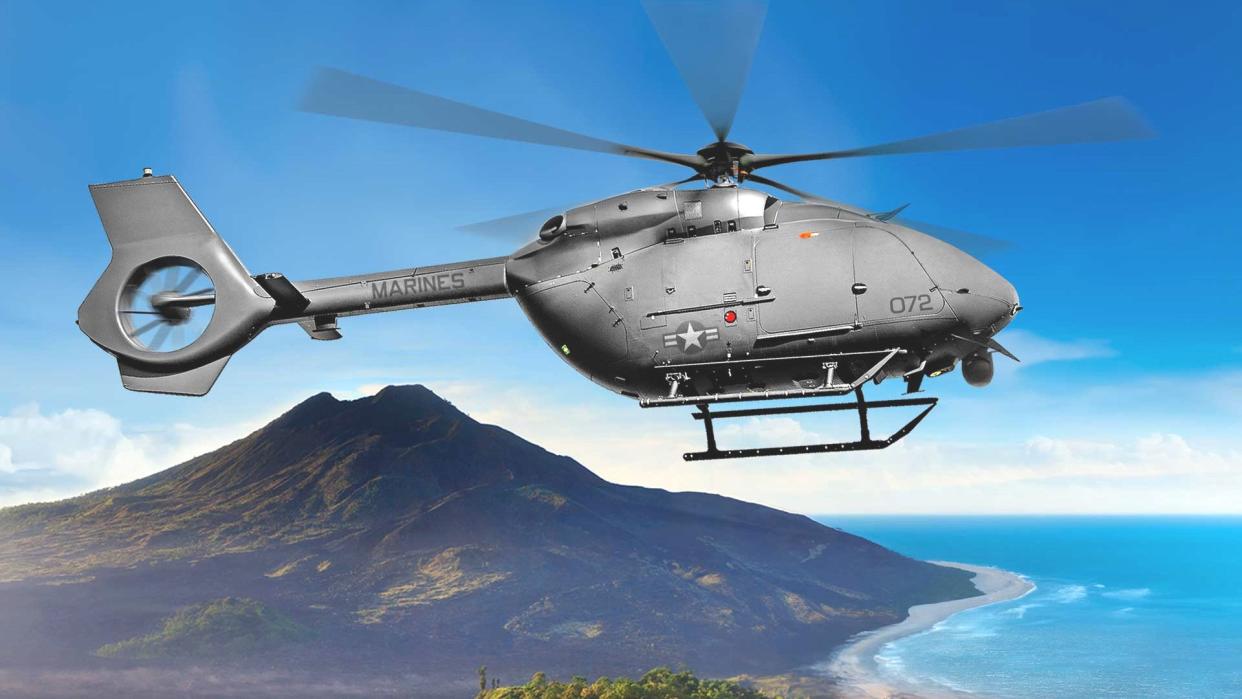
A pilotless version of the U.S. Army's UH-72B Lakota helicopter is now in the running to become a part of the U.S. Marine Corps' planned future fleets of cargo-carrying drones. The Marines see uncrewed logistics 'connectors' in the air and down below as essential for supporting future expeditionary and distributed operations, especially in the context of a possible future high-end fight with China in the Pacific.
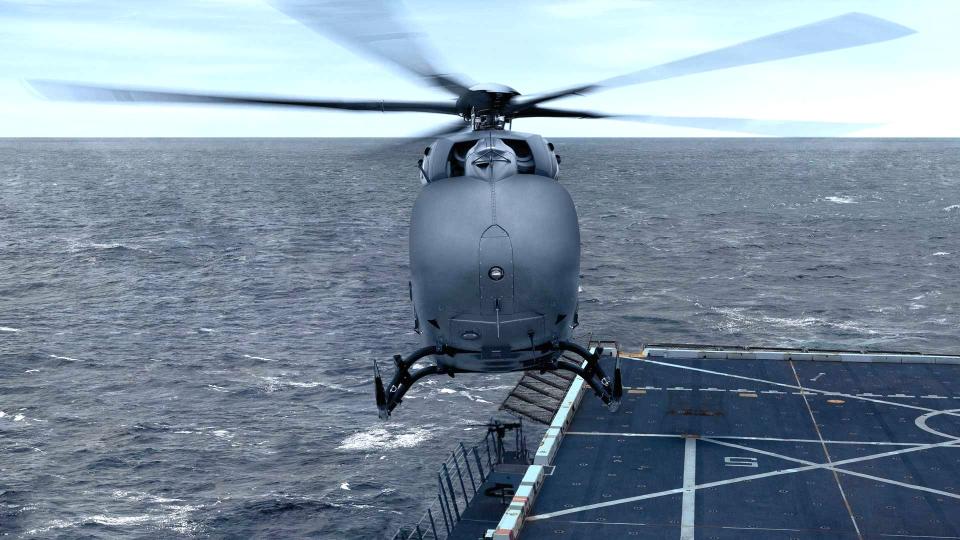
Airbus announced today that its uncrewed UH-72 had been picked to take part in Phase I of the Marine Corps' Aerial Logistics Connector (ALC) program. Three other companies are also on contract under this initial phase of ALC, but their identities are not immediately clear. ALC is at the top of three tiers of aerial logistics drones the Marines are looking to field in the future. The TRV-150C from Survice Engineering and Malloy Aeronautics is already being fielded to meet the lowest tier Tactical Resupply Unmanned Aircraft System (TRUAS) requirement. A competition is also ongoing to pick a middle-tier design as part of a program currently called Medium Autonomous Resupply Vehicle-Expeditionary Logistics (MARV-EL), which you can read more about here.
https://www.youtube.com/watch?v=c5lPCTG5mv8
“Our unmanned UH-72 logistics connector leverages nearly two decades of U.S. military capability and offers Marines a versatile, affordable and enduring solution to address logistics missions around the globe," Rob Geckle, Chairman and CEO of Airbus U.S. Space & Defense, said in a statement. "We look forward to supporting the Marine Corps with this latest modernization of the Lakota platform."
As already noted, the uncrewed UH-72 for the Marines, also called the Unmanned Logistics Connector (ULC), is based on the improved UH-72B variant of the Lakota, the first example of which was delivered to the Army in 2021. Airbus says that the ULC version has a high degree of commonality with the crewed UH-72B, and takes advantage of the improvements found on that helicopter over the earlier A variant. This includes a Fenestron-style (ducted fan) tail rotor, a simplified main rotor head with five blades instead of four, and improved digitally-controlled engines. Airbus says this gives the UH-72B improved lift performance and makes it easier to maintain, things that would also be beneficial for the ULC version.
https://www.youtube.com/watch?v=ls3KWJ4_Nbw
The UH-72 ULC is expected to be able to cruise at speeds of 135 knots out to ranges of at least 350 nautical miles, according to the Airbus website. The uncrewed Lakota will have a maximum payload capacity of around 4,000 pounds and be able to carry cargo internally and slung underneath its fuselage. Crewed UH-72s already have rear clamshell doors and an open cabin design with relatively large doors on either side, which translate well to an uncrewed cargo-carrying configuration.
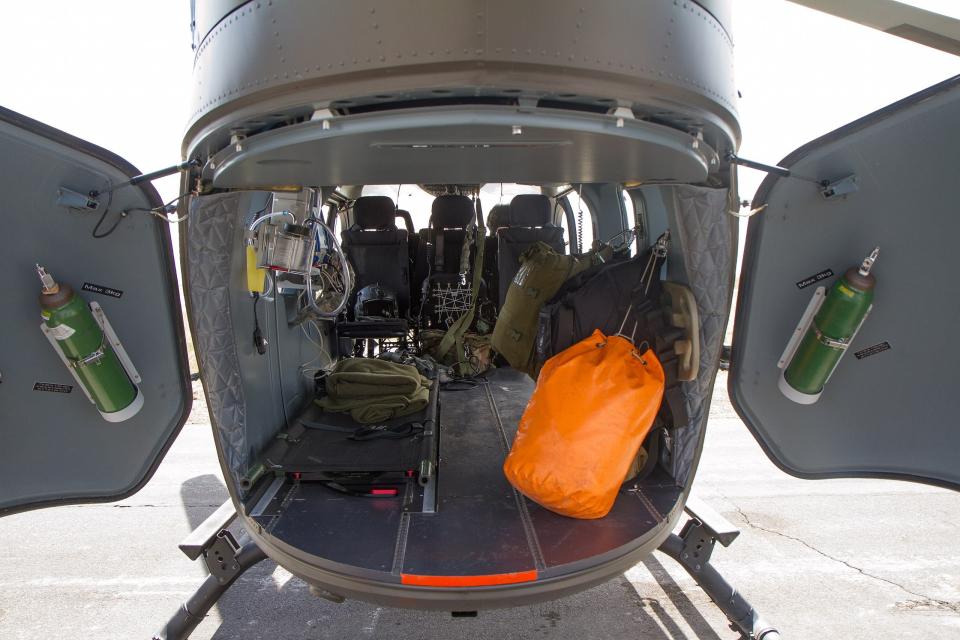
Airbus has emphasized the drone helicopter's ability to carry cargo in standardized Joint Modular Intermodal Containers (JMIC), as well as Naval Strike Missile (NSM) canisters. The Marines are separately working to field a ground-based NSM system called the Navy Marine Expeditionary Ship Interdiction System (NMESIS), which utilizes an uncrewed launch vehicle derived from the 4x4 Joint Light Tactical Vehicle (JLTV).
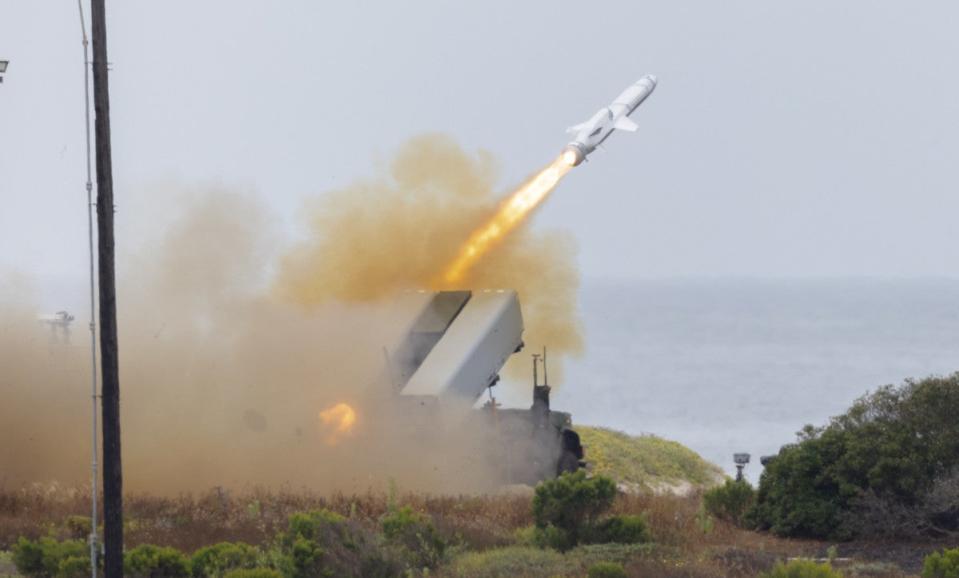
The ULC version of the UH-72 is expected to have a certain degree of autonomy from the outset, but these capabilities are also expected to expand and evolve over time, according to Airbus. The company also says that is leveraging unspecified previous in-house uncrewed and autonomous technology work to help accelerate the development of the uncrewed UH-72. A human operator will be somewhere in the helicopter's command loop at all times.
For an uncrewed logistics platform, being able to automatically follow a route using preset waypoints could be a useful baseline level of autonomy. More expansive autonomous capabilities, including the ability to more dynamically change routes or otherwise respond to pop-up threats or other hazards, would be highly desirable, especially for resupply missions for forces in more contested environments.
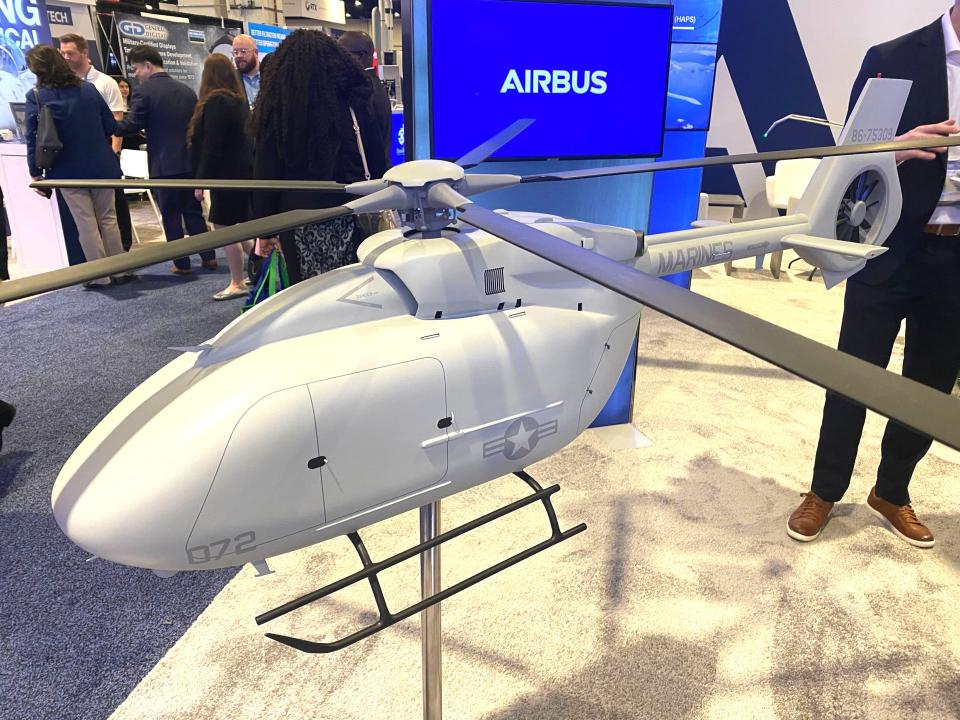
As already noted, the Marines see uncrewed logistics platforms as essential for supporting their new expeditionary and distributed concepts of operations, which are heavily centered on island-hopping scenarios in the Pacific. Speaking at the annual Modern Day Marine conference back on May 2, Marine Lt. Col. Keenan Chirhart, the senior UAS [uncrewed aerial systems] capabilities integration officer at the service's Combat Development and Integration Command (CD&I), provided a vignette for what this future might look like just with the lower-tier TRUAS drone:
"These UAS [uncrewed aerial systems] are equipped with advanced AI [artificial intelligence] and GPS hardening, enabling them to navigate complex terrain in a GPS-denied environment. They're delivering critical supplies to the point of need. They're connected digitally back to headquarters and then forward units intelligently transmit the current status of their supplies. Maybe you've got smart magazines to tell you how many rounds are left in your weapons. And maybe we got [the] supply [section] to tell us how many beans, bullets, and bandaids we have left. Communicate [that] to the Tactical Resupply UAS, and as it proceeds back to the logistics hub automatically updates and there's a pre-packaged next wave [of supplies] ready for pickup and transmission to the front lines."
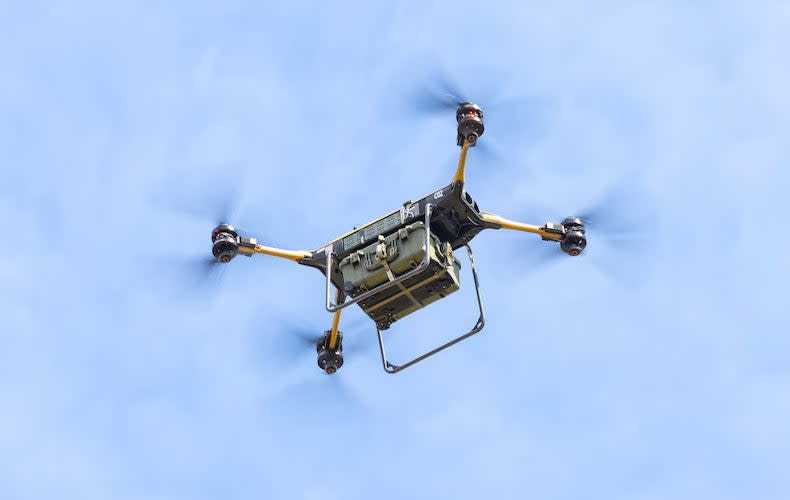
It is worth noting that the Marines have been interested in uncrewed aerial resupply capabilities for years now already. The service even operated a pair of pilot-optional Kaman K-MAX helicopters, designated CQ-24As, in this role in Afghanistan between 2011 and 2014.
https://www.youtube.com/watch?v=s-mr5I657GU
When it comes to ALC, the current plan is to demonstrate "multiple platforms from FY 2024 through FY 2026, leading into follow-on integration and development efforts for platforms that satisfy USMC requirements," according to the Pentagon's 2025 Fiscal Year budget proposal. "In FY 2026, major integration and system development efforts will continue and inform Rapid Fielding phase entry for the Aerial Logistics Connector in FY 2028."
The Marines expect to down-select to a single ALC design as part of that process. Commonality with the UH-72, a platform that is currently in production in the United States and is in service within the U.S. military, could give Airbus a leg up. In addition to the Army, the U.S. Naval Test Pilot School (USNTPS) also operates the UH-72A variant. With three other companies also in the running, Airbus is still facing real competition.
The UH-72's service with the Army has been focused on homeland duties. These helicopters are currently used exclusively for non-combat missions, including counter-drug, border patrol, and medical evacuation operations, and almost exclusively within the borders of the United States. Just yesterday, the House Armed Services Committee publicly expressed interest in learning what it would take to make the Army's Lakotas deployable in various contexts as part of the process of drafting the next annual defense policy bill, or National Defense Authorization Act (NDAA), for the 2025 Fiscal Year.
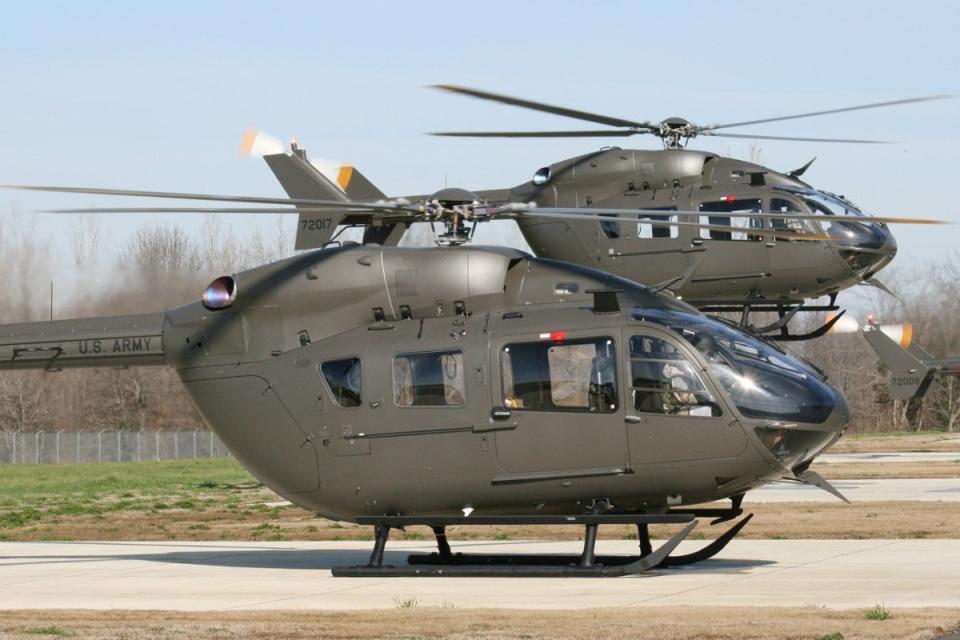
The H145 family of helicopters from which the UH-72 series is derived is also in widespread military and civilian use elsewhere around the world. As such, the uncrewed UH-72 variant could be attractive to other potential customers, including ones that also already fly crewed versions of this helicopter. The ULC version could potentially be adapted to other roles and missions down the line, as well.
For right now, Airbus says its main focus with the ULC version is competing to be part of the Marine Corps' future uncrewed logistics ecosystem.
Contact the author: joe@twz.com

